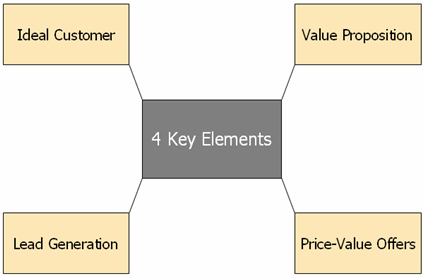Understanding Marketing Goals and Objectives
Marketing is a vital part of any business strategy. It involves delivering the right product to the right customer, at the right price. Successful marketing also relies heavily on effective promotion, advertising, and brand building. When done correctly, marketing positions your company uniquely in the marketplace, helping customers recognize the value your products or services offer.
Even companies with initially poor products have dominated their markets due to strong marketing efforts, improving product quality over time. For business managers, the first step toward effective marketing is clearly setting marketing goals and objectives.
Why Setting Marketing Goals and Objectives Matters
Marketing can be complex and unpredictable. Even companies that invest billions in marketing can fail if they lack focus. Setting clear objectives provides your marketing team with direction and a focus point. This focus allows you to develop strategies tailored to meet those goals effectively.
Because the marketing environment is full of uncertainty, you must continuously test different marketing strategies and tactics. This approach helps you identify methods that deliver the best results, reducing risk and avoiding wasted budget.

Marketing goals and objectives typically focus on:
- Increasing sales
- Growing market share
- Entering new customer segments
- Strengthening customer relationships
- Enhancing brand awareness
Examples of Marketing Goals and Objectives
Here are practical examples of marketing objectives that can guide your strategy:
- Increase sales by 25% within 22 months.
- Grow market share from 15% to 20% in 3 years.
- Enter new geographic markets with our product in 34 months.
- Develop stronger and more personal relationships with customers within 14 months.
- Launch more valuable products for customers over the next 5 years.
- Strengthen brand awareness within 20 months.
Each marketing goal should align tightly with your company’s overall objectives. Goals that do not support the bigger picture can waste time, money, and resources. Make sure your objectives are realistic and achievable within the set timeline, and avoid overspending.
Industry-Specific Marketing Goal Examples
Retail Sector
- Boost online sales by 30% during the next holiday season.
- Increase in-store foot traffic by 15% in six months.
- Expand email subscriber list by 40% to enhance promotional outreach.
Technology Sector
- Generate 500 qualified leads through content marketing in 12 months.
- Reduce customer acquisition cost by 10% over the next two quarters.
- Improve product demo conversion rates by 20% within 6 months.
Service Industry
- Increase customer retention rate by 10% in one year.
- Introduce referral marketing campaign to gain 100 new customers.
- Enhance customer satisfaction scores by improving feedback mechanisms.
Tracking and Measuring Your Marketing Objectives
Setting marketing goals is just the beginning. To ensure progress, convert your goals into measurable metrics. Use marketing KPIs and sales metrics that accurately reflect your business health. Tracking these metrics will help you monitor your marketing performance and adjust your tactics as needed.
Using dashboards and scorecards simplifies your tracking process and allows your team to visualize progress toward organizational objectives clearly.

Practical Step-by-Step Guide to Setting Effective Marketing Goals
| Step | Action | Example |
|---|---|---|
| 1 | Define clear, specific goals aligned with business objectives. | Increase sales by 25% in 22 months. |
| 2 | Break goals into measurable objectives with deadlines. | Achieve 10% sales growth by month 12 and 15% by month 18. |
| 3 | Identify the metrics to monitor progress. | Track monthly revenue, conversion rate, and customer acquisition cost. |
| 4 | Develop marketing strategies and campaigns targeting each objective. | Launch digital advertising and content marketing focused on targeted segments. |
| 5 | Regularly review results and adjust tactics as necessary. | Monthly team meetings to analyze dashboard metrics and pivot strategies. |
Tips for Effective Marketing Goal Setting
- Keep goals SMART: Specific, Measurable, Achievable, Relevant, Time-bound.
- Align marketing goals closely with overall business growth strategies.
- Prioritize your marketing goals to focus on what will add the most value.
- Document your goals clearly and share them with your entire team.
- Use tools like dashboards and scorecards to maintain visibility and accountability.
Additional Resources
To help you plan and implement your marketing goals smoothly, consider exploring these templates and toolkits:
- Marketing Plan Template
- Marketing Promotion Strategy Pack
- Financial Dashboard Excel Template
- Small Business Growth Strategy Pack
These resources provide proven frameworks and tools that can fast-track your marketing strategy development and tracking.
Summary and Action Items
Setting marketing goals and objectives is foundational to achieving business success. Below is a checklist to ensure you implement an effective marketing goal-setting process:
- ✅ Define marketing goals aligned with business objectives.
- ✅ Ensure goals are SMART.
- ✅ Break goals into measurable objectives.
- ✅ Determine key marketing metrics to monitor.
- ✅ Develop marketing strategies to meet objectives.
- ✅ Use dashboards or scorecards for tracking.
- ✅ Review and adjust marketing tactics regularly.
Applying this structured approach will help your marketing team focus, reduce uncertainty, and amplify your company’s growth potential.
Explore the Marketing Plan Template to build your customized marketing roadmap with clear goals, strategies, and tracking tools.






























